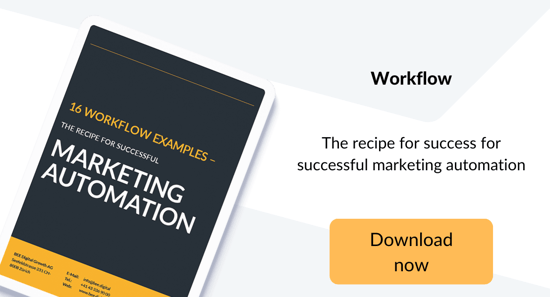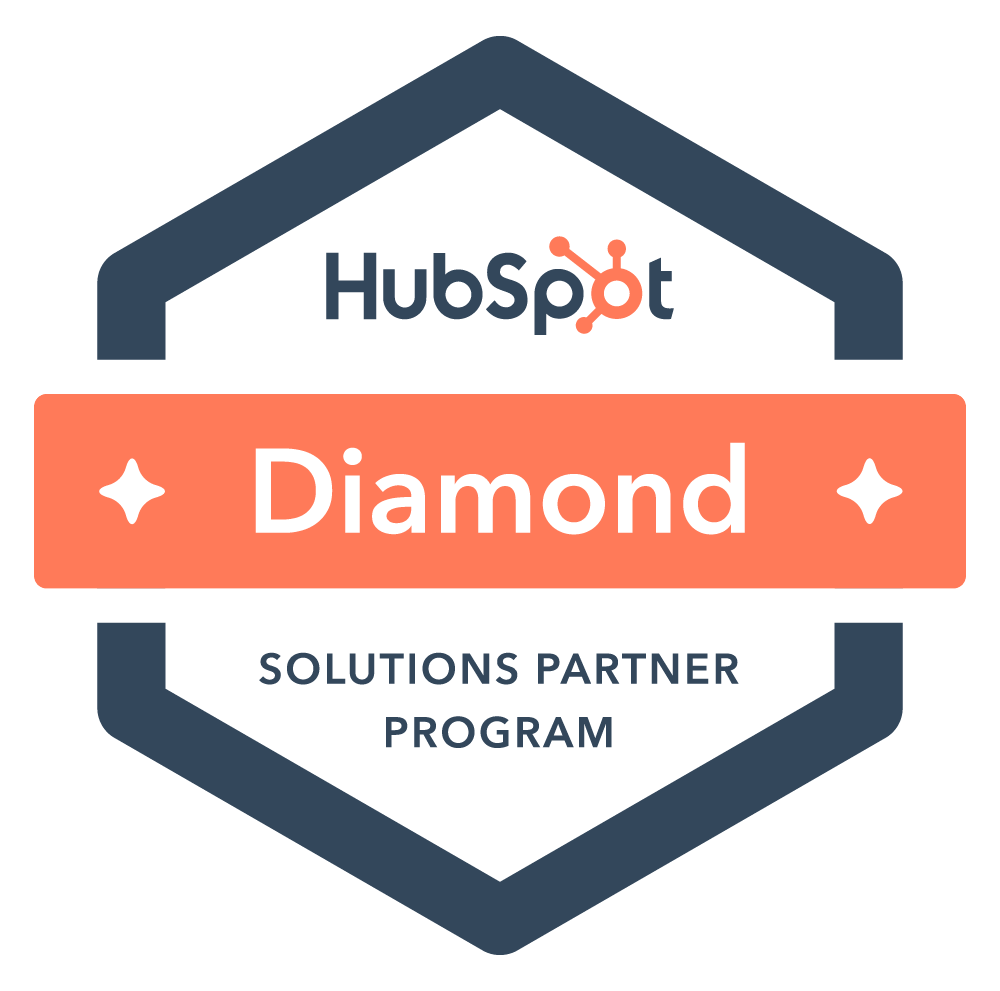-
Digital Marketing
We help you to use your digital potential. For a strong positioning, more visibility and more leads.
Sales Enablement
Targeted customer acquisition for more sales. Identify, target and close the right leads.
Get Growth ready
With the BEE.Transformance model, we bring continuous and profitable growth to your company. A new mindset for your team.
Industries
We transform your challenges into opportunities through the experience we have gained from projects in these industries.
-
HubSpot Services
As a HubSpot Diamond Partner, we help you implement your digital growth strategy with a focus on performance - by implementing and integrating new and existing systems as well as 3rd party apps.
HubSpot Thought Leader
As a HubSpot Diamond Partner with +50 certifications, host of the HubSpot User Group Zurich, HubSpot Trainer and HuSpot User Champions, you have access to in-depth HubSpot expertise.
HubSpot Solutions
The BEE.Theme offers you more creative freedom than any other theme on the market. Whether you're a beginner or a professional, a creative mind or a digital agency - with the BEE theme, you can easily unleash the maximum power for your pages in HubSpot CMS.
-
BEE.Blog
Knowledge around digital marketing, digital sales, technology, data intelligence and employees.
Knowledge Base
Pure knowledge: everything essential concentrated, compact, digitally prepared for you and ready to download.
What is inbound?
The most effective way to successfully combine digital marketing and digital sales.
-
BEE.Team
The BEE.Performers: many different characters - with one thing in common: the fascination for a digital world.
References
More than 100 large and small companies have already started with BEE: to more visibility, more performance, more growth.
Invest
Participate in the growth of BEE and become part of the BEE Growth Story by purchasing Digital Share Tokens.
We're hiring
Become a BEE.Performer! Are you ready for your own transformation?
Lead Management - The Ultimate Guide

Often, however, many contacts are only at the beginning of the buying process and are not yet ready for a concrete purchase conversation. Then it's a matter of staying in touch with them and accompanying them on their further journey with content. In our Lead Management Guide you will find everything you need to know about the Buyers Journey.
- Lead Management - Definition I
- The importance of lead generation & management
- The elements of lead generation
- Leads Sources
- Lead generation measures
- Conversion optimization
- GDPR and lead generation
- Premium Content
- Qualification of the leads
- Lead Management - Definition II
- Lead generation and lead management tools
- Case Study
- The Best Practices for Lead Management
- Success control, benchmarks and optimization
- In-house oder Outsourcing?
- Summary
Lead Management - Definition I
WHAT IS A LEAD?
As soon as a person expresses interest in your company, your services, your products or your content, for example by submitting their contact details via a form in order to receive a free e-book, they are considered an inbound lead. Now she is no longer an anonymous visitor to your website, but has gotten into the wheels of your marketing machine.
WHAT IS LEAD MANAGEMENT?
As part of lead management, processes and measures are defined and implemented, all of which serve to acquire prospects that are ultimately to be converted into customers. It is important that the marketing, sales and IT departments involved in this process work closely together. Lead management extends from attracting the lead through its nurturing to sales meetings.
The lead management process

WHAT IS LEAD GENERATION?
Lead generation is a part of lead management. In lead generation, unknown persons in a target group become aware of the company via the corporate website and are ultimately created as a contact record in the customer relationship management system (CRM). In contrast to classic outbound lead generation, in the inbound variant the initiative usually comes from the prospect, for example by taking part in a quiz and revealing their e-mail address at the end to receive the results by email. For more on lead generation in inbound marketing and outbound marketing, check out this article on our blog.
Improving the quality of leads and increasing the number of leads are the top priorities in a lead generation strategy for 58% and 46% of marketing influencers, respectively.

The importance of lead generation & management
Lead generation and lead management are adapting to consumers' new information and decision-making behavior. Before signaling their interest in buying, consumers look extensively on the Internet for information about a product or provider. If interested parties do not receive the information they need in the current phase, they leave.
By converting the visitor into a contact data record, he or she becomes more tangible, can be contacted directly depending on consent, and, with a little luck, can ultimately be converted into a customer through marketing and sales measures.
Thus, lead generation is considered to be important part of inbound marketing and is used in the second phase (Convert) of the inbound method. This way of initiating contact is much more natural and informal - and the customer journey becomes more pleasant and effective for both the customer and the company.
In lead management, leads that are not yet ready to buy remain in the system until their interest is sufficiently advanced through the appropriate monitoring and nurturing and their qualification is sufficiently clear that a conversation with a sales representative makes sense. Thereby, the following applies: The right content must be delivered to the right recipient at the right time.
Lead management is performed in both the convert phase and the close phase of the inbound marketing method - in a way that is unobtrusive to customers and vendors. Read more in this article from our blog.
.png?width=600&height=302&name=Forrester%20Best%20Practices%20Improving%20B2B%20Lead%20Management%20(2).png)
The effectiveness of lead management tactics is changing for the better for 84% of marketing influencers overall, with 38% describing the change in effectiveness as significant.
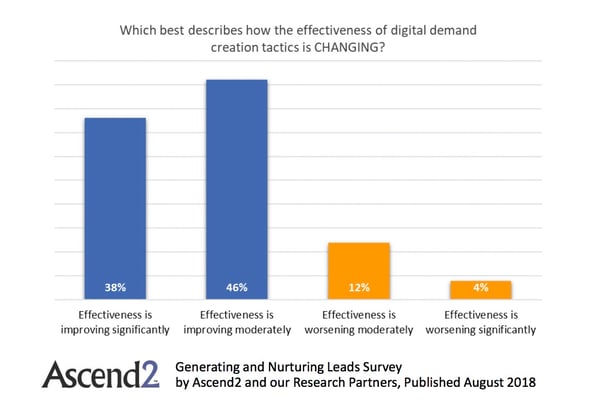
The elements of lead generation
To be registered as a lead, the visitor usually has to fill out a form on a company's website. This is usually located on a landing page, which the visitor has reached via a call-to-action (CTA).
A landing page is a page whose design and text concept mainly revolves around generating leads. This is why you often look in vain for a navigation menu. Instead, there are numerous arguments and testimonials that are intended to persuade the visitor to convert. You can learn how to create a landing page and what to look out for. Check out this article from our blog.
In online marketing, a CTA is usually an eye-catching button, a linked image, or linked text with a specific call to action. This is intended to motivate the visitor to take a certain action and bring him towards the completion within the purchase process.
In order for the visitor to fill out the form, an interesting e-book or something of similar value is sent to them in return.
Do you want a smart inbound-ready website that includes all these elements and more? Then we recommend you our BEE.Website service:

BEE.Website
You want a smart inbound ready website?
Lead sources
Prerequisite for a high number of highly qualified leads: Sufficiently qualified visitors must be attracted to the landing pages.
The primary source of this is, of course, the company's own search engine-optimized website content, such as blog articles. A CTA intelligently placed within it directs the user to an offer that is related to the content and offers complementary value.
Of course, there are many other channels that are suitable for lead generation. Social media posts are particularly worth mentioning at this point, Influencer Marketing, Mailings, Produkte-Trials, Referral-Marketing sowie Ads und Retargeting.
47% and 46% of marketing influencers, respectively, indicate Social Media Marketing and E-Mail Marketing as the most effective tactics to achieve prioritized lead generation goals. Content marketing or Video Marketing (39%) and SEO (38%) are also classified as effective.
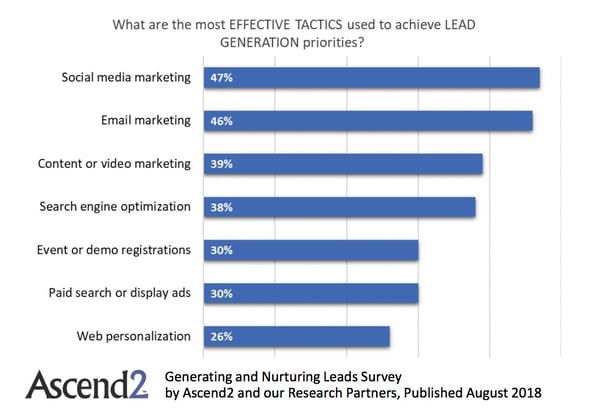
Measures for lead generation
To get interesting leads, it is recommended to use the following well-known tactics. Pick the measures that fit your business and test them!
LEAD GENERATION WITH FACEBOOK
In connection with Facebook, the Facebook lead ads are particularly worth mentioning. If you click on the button of these ads that appear in the News Feed, a small pop-up opens in the same window with a form that the interested user can fill out directly in Facebook. In addition, a button can be activated on the top right of any Facebook company page. If a user clicks on this, he or she will be redirected to the company's website, for example. Read how to attract leads with Facebook lead ads and HubSpot in this article from our blog.
LEAD GENERATION WITH TWITTER
Similar to Facebook, Twitter also offers the possibility of acquiring leads directly within Twitter via so-called lead generation card ads.
LEAD GENERATION WITH LINKEDIN
On LinkedIn, leads can be collected directly within LinkedIn via so-called Lead Generation Forms.
A good tactic for generating leads via LinkedIn is the so-called SAC campaign - SAC stands for "Start a Conversation". This involves writing to unknown contacts via LinkedIn who are, however, in the intended target group. After they have accepted the contact request, they are offered participation in a survey and a PDF report with the final survey results. Learn more in this blog post.
LEAD GENERATION WITH SEA
Simple text ads on the search results pages of Google can work wonders. Well placed and crisply worded, these ads catch the eye of many users from your target group. Google in particular has a high reach in this regard and therefore a correspondingly large potential.
LEAD GENERATION WITH LIVE-CHATS
In recent years, the use of messaging has increased significantly. Be it private, as with WhatsApp/Facebook Messenger, or professional, as with Slack. Messaging is a way of communicating that is not only used, appreciated and preferred by many (potential) customers, but also offers a lot of potential for lead generation and a better user experience. Instead of making leads wait a long time for a response after a form submission, you can connect with them live and respond to any questions and requests directly.
Live chats are mostly used within pop-ups and are either entertained by a sales or customer service representative or by bots. In the course of the conversation, the e-mail address and other contact properties of the visitor can be requested. If one possesses the e-mail address, the coordinates publicly available on the Internet and associated with this e-mail address can be collected and displayed during the chat. With the IP alone, a lot of valuable information can be gained about a user.
Intelligent chatbots also make scaling easier. For example, visitors can be routed directly to the appropriate staff member and even receive simple answers or links to helpful articles right in the chat window. These chatbots can be targeted and personalized to different user segments.
Increasingly, chats can even be found in the middle of the continuous text of the content. This makes the content more interactive and creates a dynamic exchange. This is called "conversational content". As an example, consider this page from Typeform.
LEAD GENERATION WITH PROGRAMMED WEB TOOLS
Specially programmed and publicly available web tools such as the Website Grader from HubSpot not only attract a lot of traffic, they usually convert a lot of leads as well. In the meantime, there are development environments like Bubble.is,that require no or only rudimentary programming knowledge. It is also possible to embed third-party tools on one's own website and offer them as a white-label version.
LEAD GENERATION WITH QUIZ
An amazingly good way to attract qualified leads is an intelligently made quiz. It's human nature to want to get to know oneself better and better and to communicate one's supposed qualities. Moreover, interactive content is usually much better received than static content, and quizzes are simply fun. Of course, they have to fit well into the respective context of the company and communication concept, and they should by no means be dismissed as mere gimmicks.
LEAD GENERATION WITH POP-UPS
Pop-ups continue to be a popular method for lead generation. Provided they are used discreetly and in the right place. Hello Bar is a much-used and popular tool here. But also HubSpot offers with its Leadflows comparable functions.
LEAD GENERATION WITH WEBINARS
Due to the worldwide Corona pandemic, marketing and sales activities increasingly shifted to platforms on the Internet. Thus, many workshops and trainings were also shifted to webinars. Webinars also play an important role in terms of lead generation. Instead of only reaching new customers in the immediate neighbourhood, the radius can be extended in this way. In turn, access is only granted to those who have previously submitted their contact details.
Conversion Optimization
Conversion optimization or conversion rate optimization (CRO) aims to increase the number of conversions or the conversion rate through various measures, such as changes to the website. The numerous mechanisms that cause a conversion are carefully analyzed. Then different measures are played out with A/B testing
GDPR and lead generation
Premium Content
The best lead magnet is still valuable and unique premium content. This can be an e-book, whitepaper or a guide, for example. Sufficient premium content should be created for each phase of the Buyer’s Journey and offered to users via CTAs placed inside and outside the website. The use of personalized CTAs is recommended here. These are only displayed when the user is in the buyer's journey phase targeted by the CTA.
Qualifying the leads
As soon as the lead is in the CRM, it is important to qualify it on an ongoing basis. This involves determining how interested they are in a company's products and services and whether the fit between the prospect and the company is great enough. This can mainly be deduced from the information he reveals and his engagement on the website. How much information is ultimately needed depends on the company. The goal is to develop a lead from "interested" to "MQL" (marketing qualified lead) to "SQL" (sales qualified lead). A good way to qualify leads is "lead scoring." More on this in the next section.
Lead Management - Definition II
LEAD SCORING
If the contact database contains enough data records, lead scoring can be performed. In lead scoring, the leads are qualified quantitatively. Each lead is assigned a numerical value according to a previously defined scale, from which the interest and fit can be read. The score changes depending on what information the leads share, what actions they complete online, and what level of engagement they have with the company. It is important that the measurement criteria are established beforehand and that everyone adheres to them when using this scale.
LEAD NURTURING
Lead nurturing involves building a relationship with the lead. Helpful content is used to stimulate interest and curiosity - towards the company and its products and services. This is where the use of marketing automation software comes in handy. With the help of this special software, suitable and personalized marketing content can be fed automatically. A lead is accompanied through its customer journey in a targeted manner. The information provided depends on the characteristics of the lead, the phase it is in, and the actions it performs online. Read more about the benefits of marketing automation in this article from our blog. If you want to know details about the current state of marketing & sales automation in Switzerland and Liechtenstein, we recommend our survey on this topic:
In lead nurturing, the individual contacts pass through various qualification levels. The requirements for reaching the different levels should be precisely defined from the beginning. In general, there are 3 levels as the followings:
- Marketing Qualified Lead (MQL): Contacts who show a high level of interest and fit towards the company and its products and services. With them, further unobtrusive marketing measures are worthwhile. However, it is still too early for a direct exchange with sales.
- Sales Accepted Lead (SAL): These contacts were reviewed and accepted by the sales department.
- Sales Qualified Lead (SQL): In the meantime, the interest in buying has increased and become so concrete that these contacts can be contacted personally by the sales department.
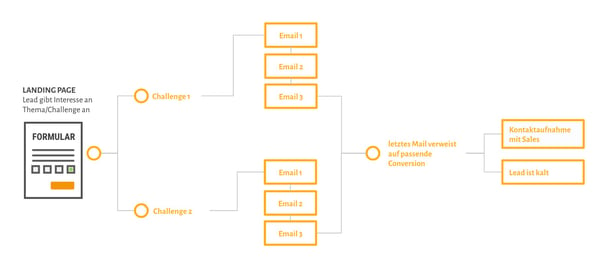
Example of a lead nurturing process
Marketing influencers cite more sales opportunities (55%) and more customer conversions (53%) as top goals of lead nurturing strategy.
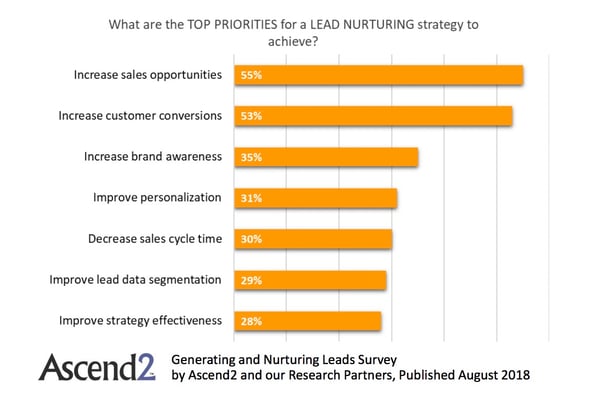
Email marketing, content marketing, or video marketing are the most effective tactics in lead nurturing according to 47% and 45% of marketing influencers, respectively.
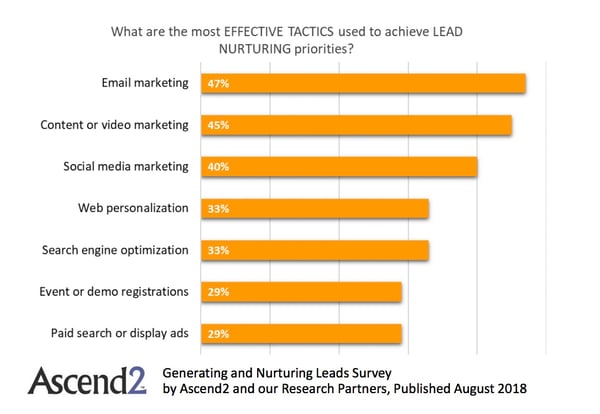
LEAD ROUTING
In lead routing, the qualified prospect is handed over to sales. Sales then use the information gathered from marketing to developing a sales strategy that will ultimately persuade the customer to buy. The prospect's record is forwarded to the ideal salesperson. Lead routing is considered the interface between marketing and sales. This process can also be supported by suitable software.
Lead generation and lead management tools
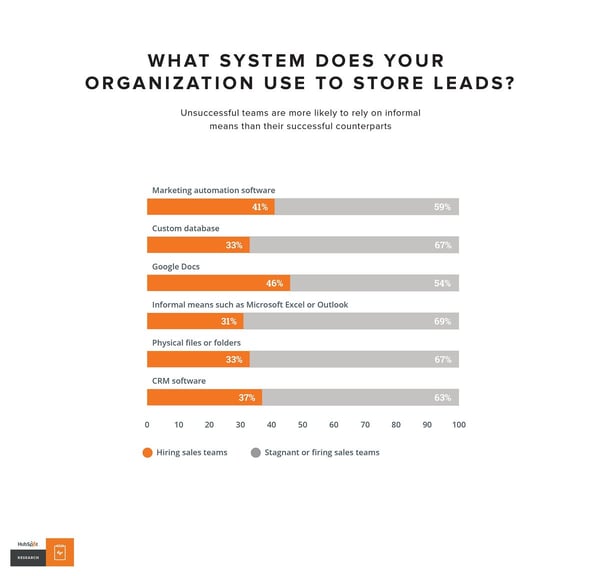
MARKETING AUTOMATION
Lead management can be efficiently implemented using marketing automation software. Depending on the characteristics of a lead, the phase it is in, and the actions it performs online, this software can be used to automatically send it suitable and personalized marketing content. The lead is effectively accompanied through his customer journey. This automation reduces the workload of the marketing team, and the sales team only receives contacts with a clearly identifiable purchase intention that can be addressed at the appropriate time. Here you can find our comprehensive guide about Marketing Automation.
Read more about marketing automation in our e-book:
Here, too, the use of all-in-one solutions such as HubSpot is recommended. In addition to a CRM and web analytics capabilities, they offer tools for emailing and social posting distribution, for example. Many products even have a powerful CMS integrated. Also important here is an intelligent lead scoring system that can be used to determine the maturity of contacts.
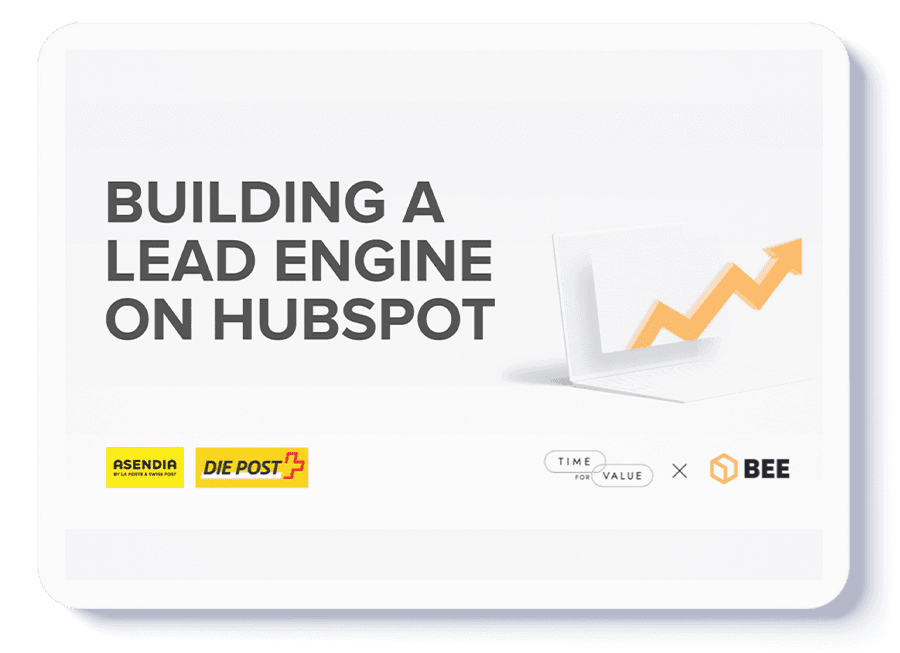
Case Study
Learn how Asendia could increase its conversion rate with HubSpot from 25% to 45%.
The Best Practices for Lead Management
- Define your perfect lead
Find out and record what makes the lead the biggest match for you. What are his problems, his interests, his preferred content, his consumption patterns, his preferred channels, his role in the buying process? How can you tell if he is sales-ready? Then, sensitize your team to this persona and the associated lead generation strategy. - Tailor content that is perfectly fit your leads' needs
Produce high-quality content and tailor it to your buyer personas. Create blogs, emails, premium content, social media posts and become a trusted and omniscient companion for your buyer personas in their buying process. - Align your marketing and sales team
Set up a central database for both teams that lists all generated contacts and associated marketing and sales activities.
Define a lead response time that applies to both marketing and sales. - Plan the lead nurturing journey
Outline which content should be fed to the lead at which stage. Link your content assets cleverly with each other and make sure that every reading leads to purchase sooner or later. The key here is to only pass the lead on to the sales team when it is ready. - Invest in Marketing automation
To make lead nurturing scalable and more efficient, it pays to invest in marketing automation. All-in-one solutions like HubSpot are particularly well suited for this. - Always keep your contact details correct and complete
Maintain your contact database and keep it up to date. - Set up a feedback-Loop
During lead management, you and your team gain a lot of valuable experience. Through this, the process can be improved further and further. To do this, however, feedback must always be obtained and communicated to the people concerned.
Success control, benchmarks and optimization
Your lead generation and lead management should be subject to ongoing performance monitoring and optimization. Measure all important key figures and KPIs and carry out A/B split testing and experiments. It is advisable to carry out the adjustments step by step and to determine their effects after each one. If several changes are made at the same time, it is difficult to determine which one did what.
The following KPIs are particularly important within lead management:
- Inbound Leads
- Marketing Qualified Leads (MQL)
- Sales Qualified Leads (SQL)
- Number of new customers
- New Customer Acquisition Cost (CAC)
- Marketing share of customer acquisition costs
- Net profit per new customer
- Payback period of customer acquisition costs
- New customers acquired through marketing
Want to learn exactly what these KPIs are and how you can measure your lead management and lead generation efforts and the performance of your other marketing efforts? Then I recommend our Digital Marketing KPI Guide.
If the important KPIs are measured and tracked as part of lead management, it quickly becomes apparent that these figures alone are not very meaningful. Here it helps to use current comparative figures from surveys. Below you will find average values for the most important figures:
Number of leads generated per month by annual profit and size of the company
A high profit and the size of the company usually have a significant positive effect on the number of leads generated.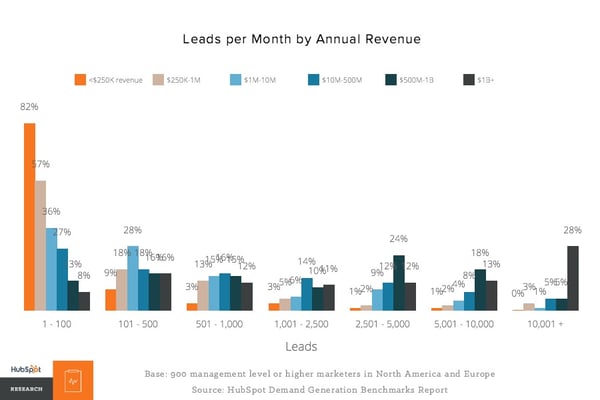
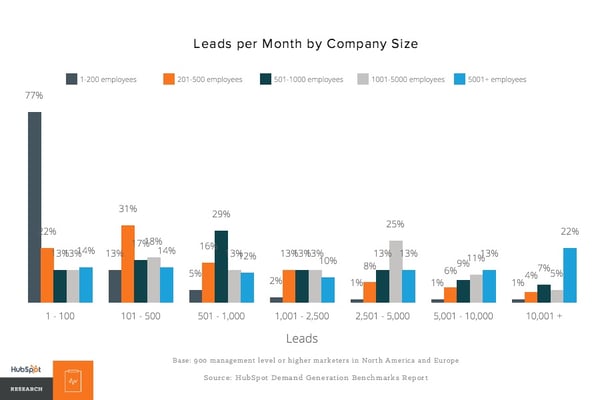
Cost per lead by industry
The cost per lead varies significantly depending on the industry. In the media industry, they are usually quite low, whereas they are quite high in the IT, software, marketing and finance industries.
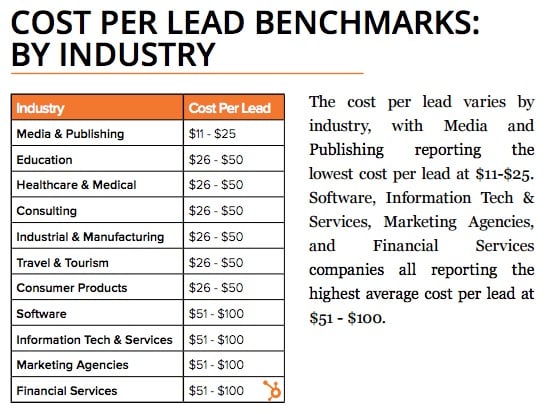

BEE.Performance Marketing
Achieve your goals - measurable, adjustable, tangible.
In-house oder Outsourcing?
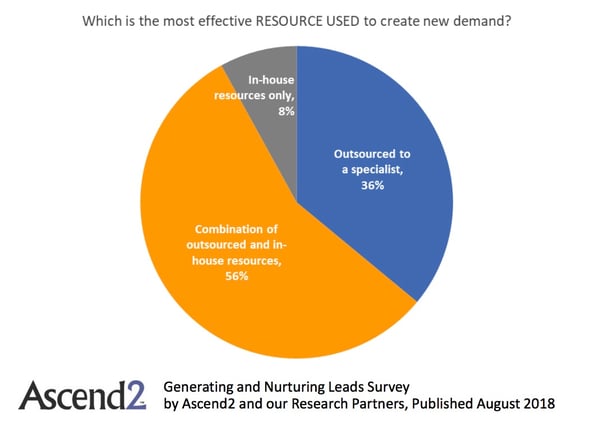
We would be happy to accompany you on your journey to more quality leads and customers. Just get in touch with us:

BEE.Consulting
You never forget the first contact
Conclusion
BEE is a digital growth solution partner
Transform to perform
For mid-market and corporates in the DACH Region that want to transform their business in order to grow locally and globally, BEE is the highest-ranked digital growth solution partner that combines strategy, execution, data intelligence and people in a transformance model.
What BEE stands for
BOOST performance
EXPAND growth
EXCEED expectations


